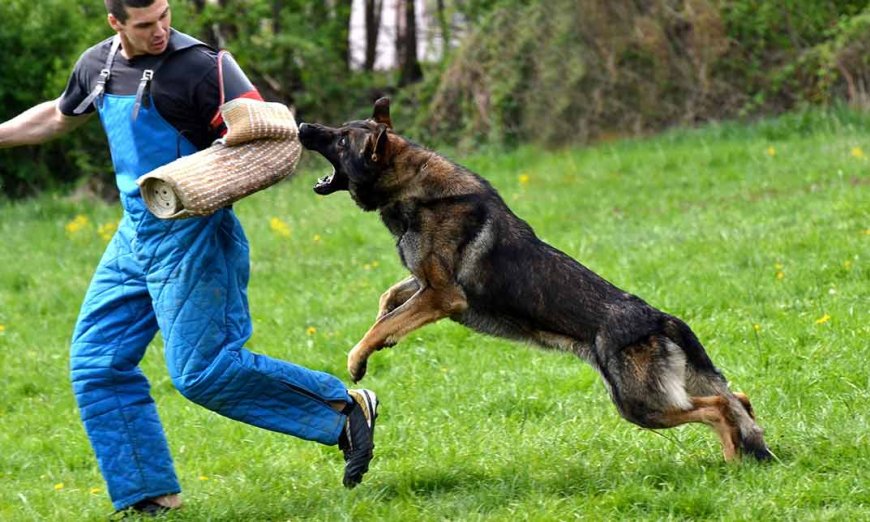Lone Worker Dog Bite Prevention | Ensuring Safety in Isolated Environments
Lone Worker Dog Bite Prevention

Lone workers, individuals who perform their duties in isolation without direct supervision or colleagues nearby, face unique challenges in their work environments. Among these challenges, the risk of dog bites is particularly significant, especially for those in professions such as delivery services, utility work, postal services, home healthcare, and real estate. The nature of their work often requires entering residential properties where dogs may be present. This article provides a comprehensive guide to preventing dog bites for lone workers, emphasizing the importance of understanding dog behavior, implementing preventive measures, and responding appropriately to potential threats.
Understanding Dog Behavior
The foundation of Lone Worker Dog Bite Prevention lies in understanding canine behavior and recognizing the signs of aggression or anxiety. Dogs may exhibit aggressive behaviors for various reasons, including fear, territorial instincts, pain, or a protective response. Common indicators of a dog’s discomfort or aggression include growling, snarling, baring teeth, erect ears, a stiff tail, raised hackles, and intense staring. Conversely, signs of fear or anxiety may involve cowering, attempting to retreat, or showing submissive postures. Lone workers equipped with knowledge about these behaviors can better anticipate and avoid potentially dangerous situations.
Comprehensive Training and Education
Effective dog bite prevention starts with thorough training and education for lone workers. Training programs should cover the basics of dog behavior, body language, and common triggers for aggression. Role-playing exercises can be particularly beneficial, allowing workers to practice how to react in various scenarios they might encounter on the job. Additionally, training should include the proper use of personal protective equipment (PPE) and deterrent devices. For example, employees can learn how to use dog repellent sprays, air horns, and ultrasonic devices effectively. By providing workers with practical skills and knowledge, they are better prepared to handle encounters with dogs confidently and safely.
Effective Communication and Notification Strategies
Communication is a critical component of preventing dog bites. Employers should encourage customers to secure their dogs before a worker's visit. Pre-visit notifications can help in this regard, allowing customers to be aware of the expected time of arrival and take necessary precautions. Visible signage on properties indicating the presence of a dog can also provide early warnings for workers to proceed with caution. For instance, a utility worker visiting a residential property should look for signs of a dog, such as toys, bowls, or barking, before entering the premises. Effective communication strategies reduce the likelihood of unexpected dog encounters and create a safer environment for lone workers.
Encounter Protocols and Best Practices
When lone workers find themselves in a situation where a dog is present, following established best practices can significantly reduce the risk of a bite. Upon arrival, workers should assess the environment for signs of a dog. Approaching confidently but calmly is essential, as dogs can sense fear and agitation, which may provoke aggression. Avoiding direct eye contact with the dog is crucial, as staring can be perceived as a threat. Instead, workers should observe the dog peripherally while speaking softly to avoid startling the animal. Using barriers, such as a vehicle or fence, to keep a safe distance from the dog can also be an effective precaution. Importantly, workers should never run from a dog, as this can trigger the dog's chase instinct. If a dog approaches, standing still and avoiding sudden movements can help de-escalate the situation.
Handling Aggressive Dogs
Despite taking preventive measures, lone workers may still encounter aggressive dogs. In such cases, employing specific techniques can help mitigate the risk of a bite. Using a firm, authoritative voice to give commands like "No" or "Stay" can sometimes deter the dog. Distraction techniques, such as throwing food or a toy away from oneself, can also redirect the dog's attention. If carrying deterrent devices, workers should use them as needed to protect themselves. In situations where an aggressive dog is not deterred, backing away slowly while facing the dog, but without making direct eye contact, is advisable. These techniques, combined with training, can help lone workers navigate dangerous encounters more effectively.
Post-Incident Protocols and Organizational Measures
In the unfortunate event of a dog bite, immediate and appropriate actions are necessary. Lone workers should seek medical attention promptly to address potential injuries and prevent infections. Reporting the incident to both the appropriate authorities and their employer is crucial for documenting the event and enabling the organization to take further preventive measures. Employers should provide psychological support to workers who have experienced dog bites, as such incidents can be traumatic.
On an organizational level, employers must implement comprehensive policies and procedures for dog bite prevention. Regular risk assessments should be conducted to identify areas with high dog bite risks, and appropriate safety measures should be implemented. Reviewing all dog bite incidents can help identify patterns and improve preventive strategies. Clear communication of policies, regular training updates, and continuous support for lone workers are vital components of an effective dog bite prevention program.
Conclusion
Preventing dog bites for lone workers requires a multifaceted approach that includes understanding dog behavior, comprehensive training, effective communication, and clear encounter protocols. By equipping lone workers with the knowledge and tools to handle potential dog encounters, employers can create a safer working environment. Organizational measures, such as risk assessments and incident reviews, further enhance the effectiveness of dog bite prevention strategies. Ultimately, a proactive approach to dog bite prevention ensures the safety and well-being of lone workers across various industries, fostering a more secure and productive workplace.












